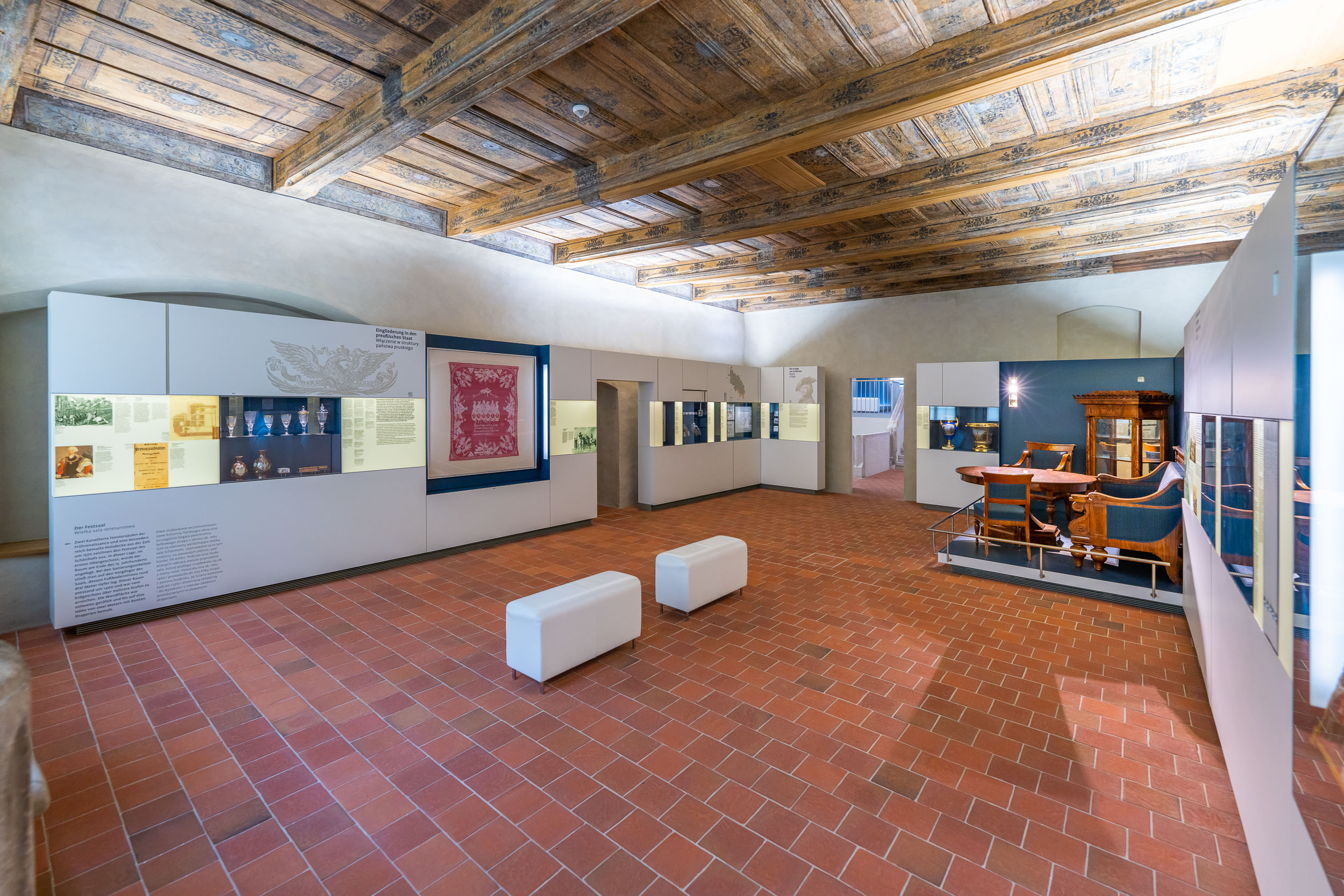
Peace scarf to mark the end of the Silesian Wars
Photographs
On the Peace of Hubertusburg on 15 February 1763
On 15 February 1763, the third and final Silesian War – the "Seven Years' War" – ended with the Peace of Hubertusburg. After three bloody wars by Frederick II against the established superpower Austria, which had brought the Prussian army to the brink of collapse several times since 1740, Prussian rule in Silesia was internationally recognised.
Cloths celebrating the Peace of Hubertusburg have survived in several versions. An inscription here explains the central motif of this damask wall hanging: “Zwey kayser und drey könige”, tired of war, make peace with “Preußen Friedrich” at Hubertusburg Castle.
The two opponents of the Silesian Wars, King Frederick II of Prussia and the Austrian Empress Maria Theresa, are depicted with their allies, the kings of France, Poland and Sweden and the Tsarina of Russia.
Cloths of this type were woven from linen and damask and produced in small editions of a few dozen pieces on behalf of the Prussian state. This is indicated by the Prussian eagle and the king’s initials “FR” in the corners of the cloth. They were probably used as gifts for state officials and other high-ranking personalities.
The news of peace was greeted with great relief throughout Germany. The Prussian king was regarded as a brilliant warlord, but also as an unscrupulous man of power. After his military success, he now endeavoured to present himself to the public as a prince of peace. The tapestry shows him in the circle of his treaty partners and allies as a reliable and recognised member of the community of European rulers.
See similar attractions!
On a 2000 m2 exhibition space, visitors can explore approximately 1000 exhibits from the history of Silesian culture.
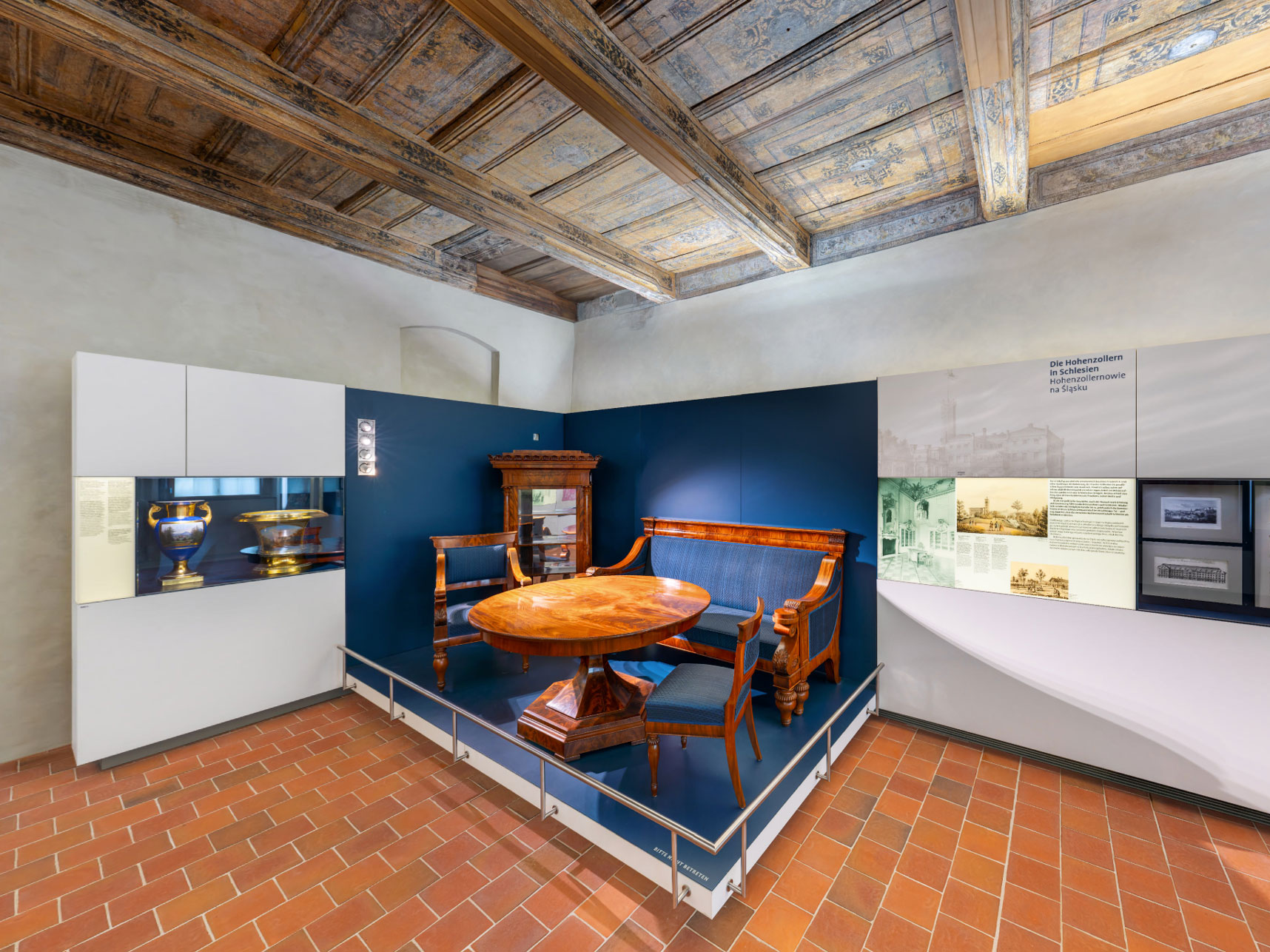)
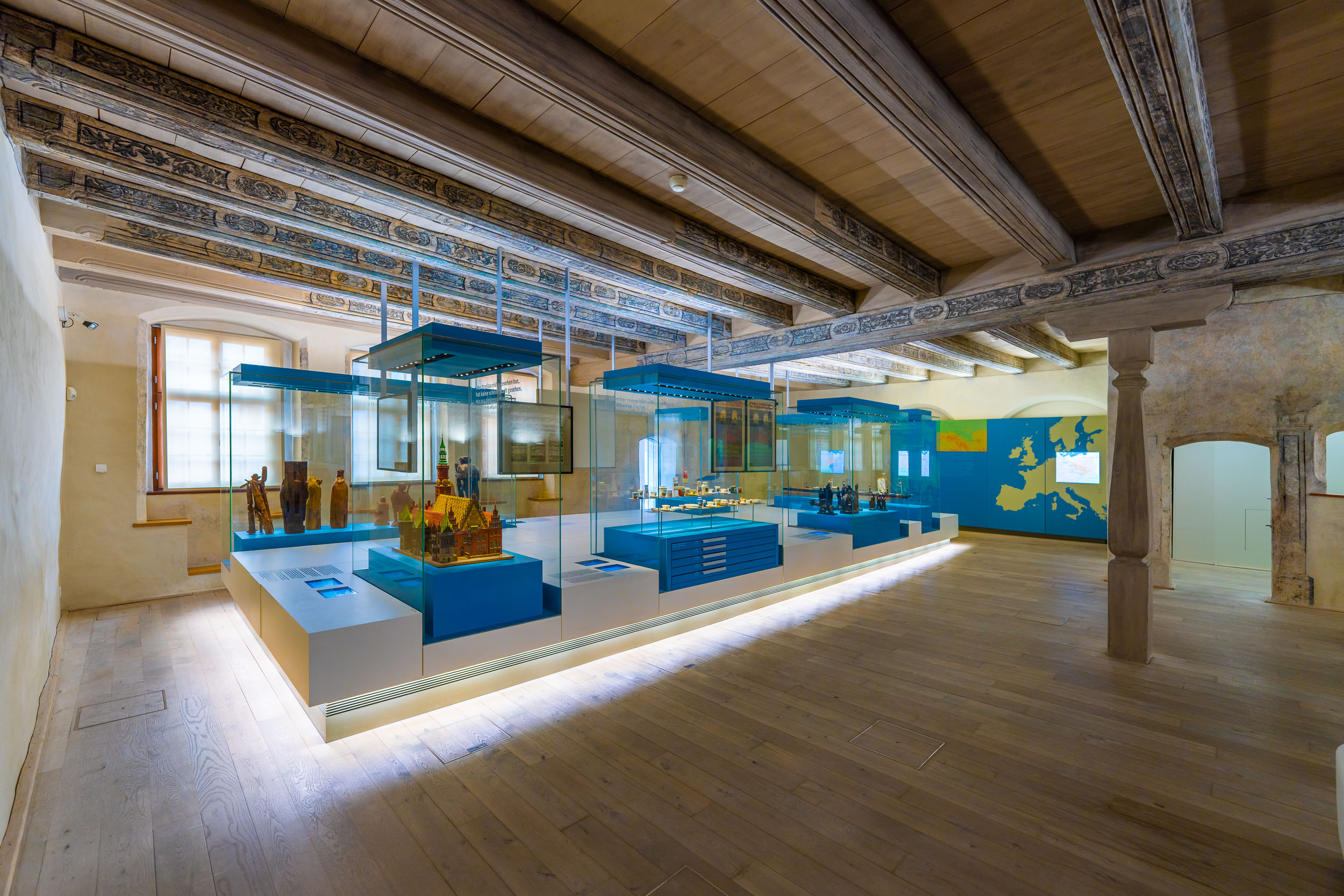)
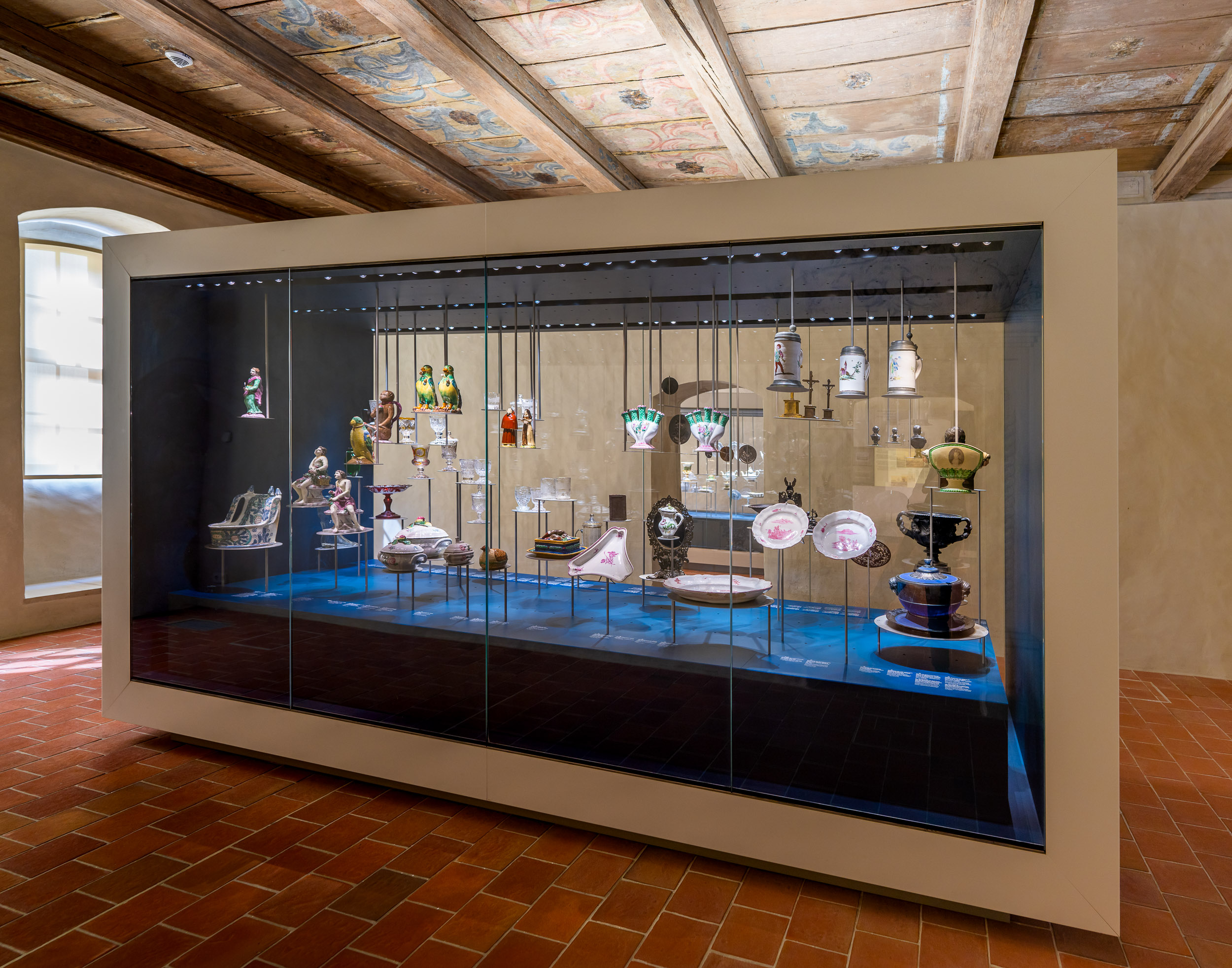)
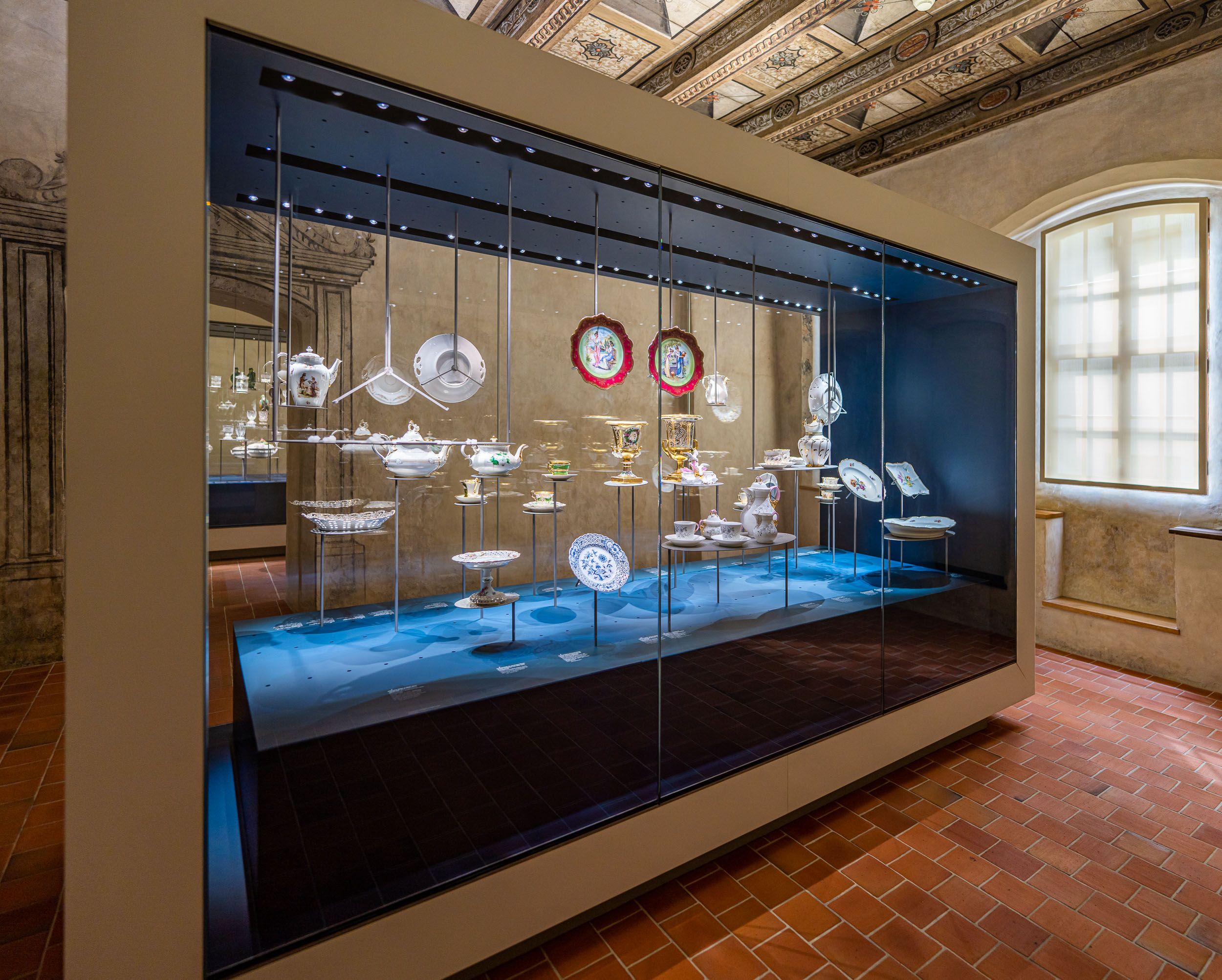)